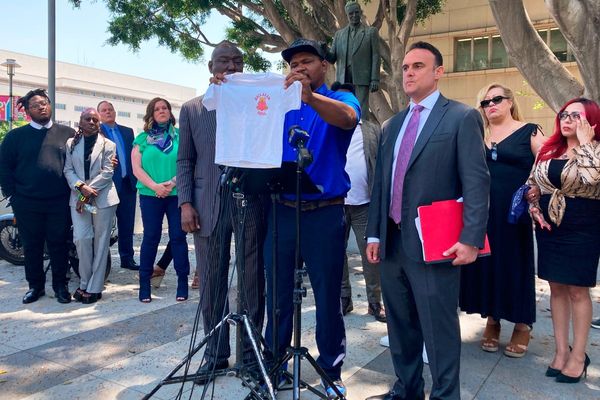
Fans, journalists and team members know how much of a team sport Formula 1 is. But, sometimes, the casual observer witnesses the driver taking all the plaudits. In this case, the legions of engineers, pitcrew and management are the unsung heroes.
Thanks to behind-the-scenes documentaries, names like Christian Horner and Toto Wolff have become household names. Franz Tost rarely gets a look in, though.
This is where the upcoming video game F1 Manager 2022 comes in because you get to be the clinical Austrian. Or rather, you get to be your own boss and control every aspect of an F1 team, save for the actual driving.
The complete 2022 driver and circuit roster is present and correct yet so too are the real race engineers, aerodynamic experts and technical chiefs. You must balance the board’s requests with part developments, all the while juggling the sporting code.
Your aim is twofold: become world champions and try not to get sacked.
With the initial details previously revealed earlier this year, it was finally time to try F1 Manager 2022 at the game developer’s Cambridge offices ahead of its 30th August release date for PC, PlayStation and Xbox.
Race presentation is a new level for management games
Jumping straight to the big reveal, the main element that has remained hidden to this point has been what the races look like.
Sounds obvious, but for a management title, you don’t necessarily have to represent the cars on track in anything more than moving icons – analogous to a pitwall driver tracker.
Yet, F1 Manager 2022 does indeed showcase the entire grid when you race with 3D models and dynamic weather no less. Each track is also faithfully recreated using a mixture of CAD data so that not only is the asphalt visible, but the surrounding buildings, fences and greenery too for an added sense of grandeur.

Should that traditional top-down, dots moving, management view be more to your liking, anything above 2x race speed will switch to this angle.
I’m sure you will use this more the further you understand the game’s nuances, but for my first race, overseeing Alpine during the Azerbaijan Grand Prix, I wanted to see the cars on the track as much as possible.
Once a race has begun – you can oversee practice and qualifying sessions but my time with the game was limited – while the car’s movements aren’t as smooth as Martin Brundle’s East Anglian tones, they do deliver enough authenticity for you to overlook the slightly risk-averse behaviour.
The sense of occasion is added to by the punditry combination of David Croft and Karun Chandhok who rattle on contextualised with greater detail than anticipated.

Selecting a team upon launching the game reveals remarkable face representations, with George Russell staring back at you with a determined realism. These are then also used in pre-race scenes where your drivers speak to engineers, or afterwards celebrating a podium finish.
On the track, it doesn’t trouble driving title EA SPORTS F1 22 for visual prowess. It is streets ahead of anything else in the strategic sub-genre though and in some presentation areas, manages to beat out the more established F1 development team.
However, despite the atmosphere and race day visuals, it’s demonstrably a management game first and foremost and that’s where we shall head next.
A slick user interface
The racing visuals are a pleasant surprise, yet F1 Manager 2022’s core appeal must lay in delving into layers of data to inform crucial decisions.
Menus, menus and more menus. At your disposal is a home area featuring shortcuts to the main departments or management areas such as driver development, car part management or your race calendar.
But really, I found that your email inbox is the main place to visit for a sense of what you should act upon next, with messages from fellow team members updating you about goals, revenue and upcoming races.
Along the bottom of your screen will always be a row of icons you can use to hop between different areas such as financial management or team recruitment.
At the top right of your screen is a giant continue button that remains in position, changing its action based on your progress. Simply, if you want to move on to the next session or race, that’s the area you will always navigate to.

There’s a lot to sift through, yet while there is always the continue button to progress, there isn’t always a ‘back’ button to return to your last department.
Instead, you use the icons along the bottom, and I hope with time you will get used to that. There’s also set to be a tutorial upon first starting the game, guiding you around, which I have yet to try. With a bit of luck, this will help newcomers acclimatise.
I played on a PC using a mouse and keyboard, support for which is not included in the PlayStation or Xbox versions. The team has a strong history of making management games like Planet Coaster adaptable to gamepad use, but at this stage, we couldn’t test this input method, a key facet to this game’s potential success.
Part allocation is just as important as development
What you’ll be doing within these menus, alongside checking your targets and investing in a helipad (no, I don’t regret it, that was $500,000 well spent…) is working on your team’s progression.
During my gameplay session, I was made aware of a lack of comparative cooling performance so investigated what could be upgraded within the sidepods.
Investing in the creation of a revised design meant potential cost cap implications, wind tunnel hours and Mega Allocation Unit hours (MAUh) usage – all rules the real Oxfordshire-based squad must adhere to.
It’s more detailed than simply selecting one area for development too, as in this instance there were four parameters to tweak: drag reduction, engine cooling, front airflow and middle airflow.

Altering one slider to the benefit of one parameter negatively affected the others. Finding the optimum balance is a compromise.
Once the parts have been created, it’s not magically placed upon your cars, either. That’s your job to allocate the new additions. I say cars, plural, because both off track and in a race, you are overseeing both vehicles entered by your team.
Memories of the Mark Webber vs Sebastian Vettel front wing debacle from 2010 came flooding back.
It’s worth noting, however, that while you create new car updates, visually your vehicle will remain the same even if a new front wing is designed, for example.
Team-member oversight is extraordinarily detailed
With the full roster of reserve drivers, Formula 2 and Formula 3 on offer, I was able to recruit F3 upstart and younger brother to Charles, Arthur, Leclerc as the third driver.
Impressively, Leclerc seamlessly changed into matching Alpine overalls upon the successful hire – contemporary driver academies are clearly disrespected, but that’s not an emersion breaker in my opinion.

Simulating the driver market is a requisite feature for a game of this ilk, but what I didn’t expect was the accuracy of the team personnel, resplendent in matching real-world positions and a competence rating out of 100.
You can even switch Esteban Ocon’s and Fernando Alonso’s race engineers – Josh Peckett and Karel Loos – should you want to. If so, an affinity rating comes into play, so there’s no guarantee they will gel with their new drivers.
The racing is a rush
Back to my race then, and from the lower end of the top three, both of our Alpine drivers make it through the first lap unscathed.
The race experience is more in-depth than initially meets the eye. My initial response is to set the drivers to push as hard as they can in the early laps. That meant requesting a driving style change, setting the energy recovery system to the overtake mode and jettisoning any fuel management.
Positions gained; things were going well. Little did I know that pushing so hard early on would also negatively affect tyre wear at an alarming rate, forcing my hand into an early pitstop and a visit to the motion-captured crew.

All the time I was flicking between teammates, real-time viewing via broadcast-style or on-board camera angles, coaxing the ERS management to the nth degree. My race engineers – using authentic audio clips from prior races – were constantly radioing the drivers to manage their pace.
I even witnessed a safety car, following a Max Verstappen crash. A small interruption for me, but other invited guests playing in the same room alongside me experienced red flags, based on statistical probabilities based upon past races at each venue.
With the pack condensed again, both driver’s tyres were in a worse condition than my primary rivals. Alonso loses positions to the Silver Arrows but has a comfortable gap to seventh. Ocon, however, steadily fell back to 12th.

Driving back home from the studio, I was still cursing myself for the rushed tyre strategy, robbing my team of a double points-paying position and ruing a lack of foresight.
Whether or not F1 Manager 2022 features enough progression or gameplay hooks to keep you entertained for several seasons remains to be seen, but as it stands, I can’t wait to play more.







